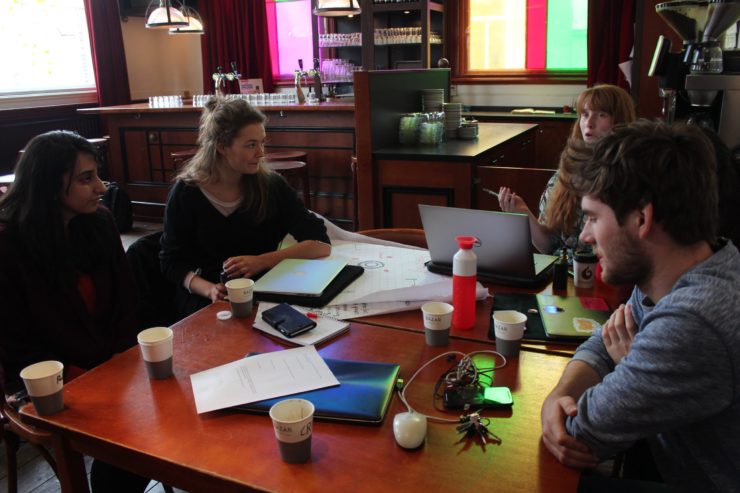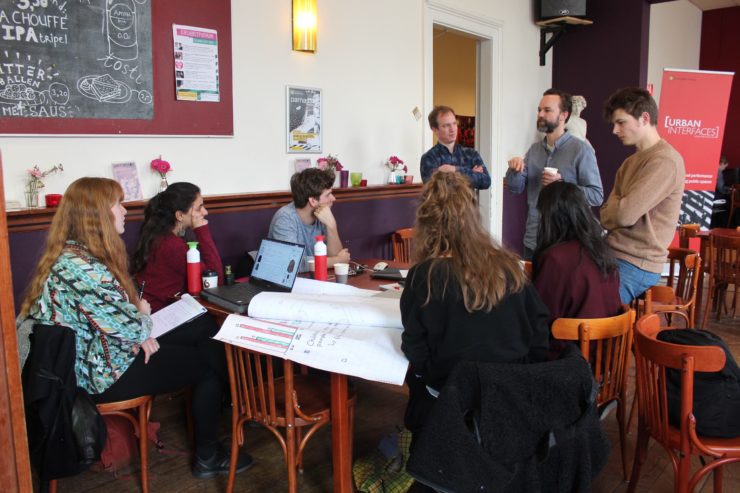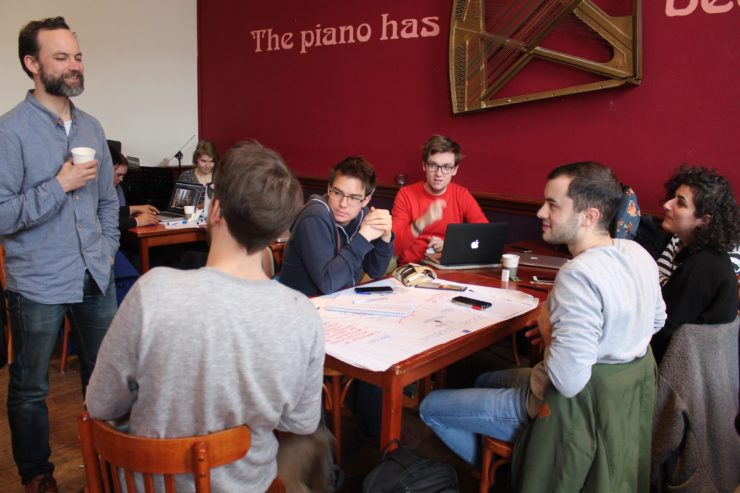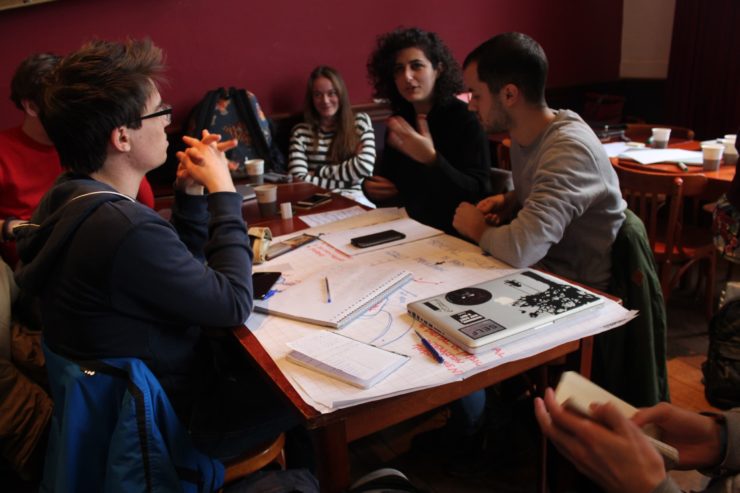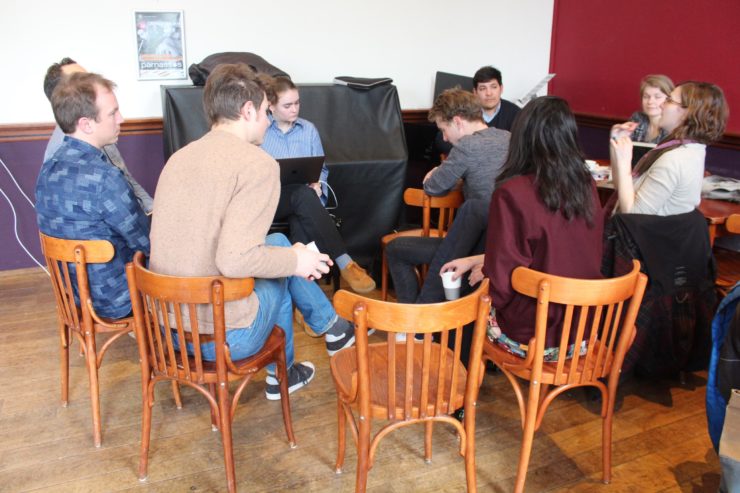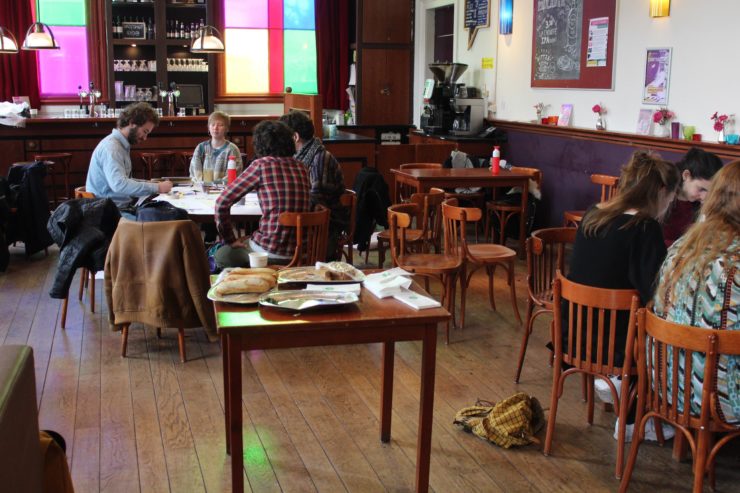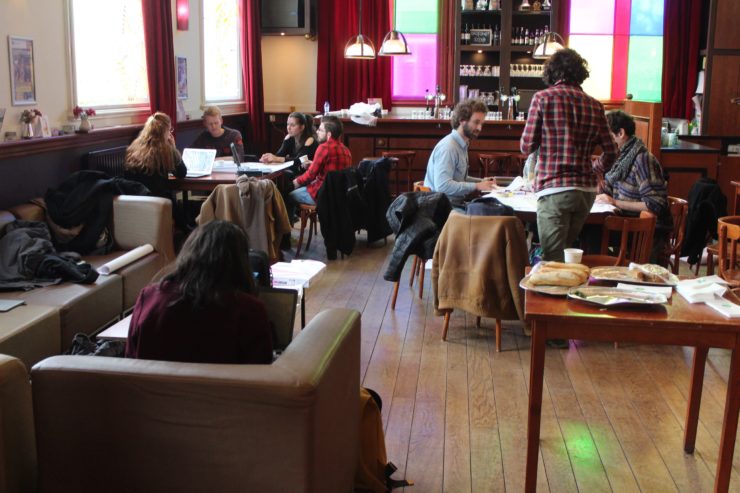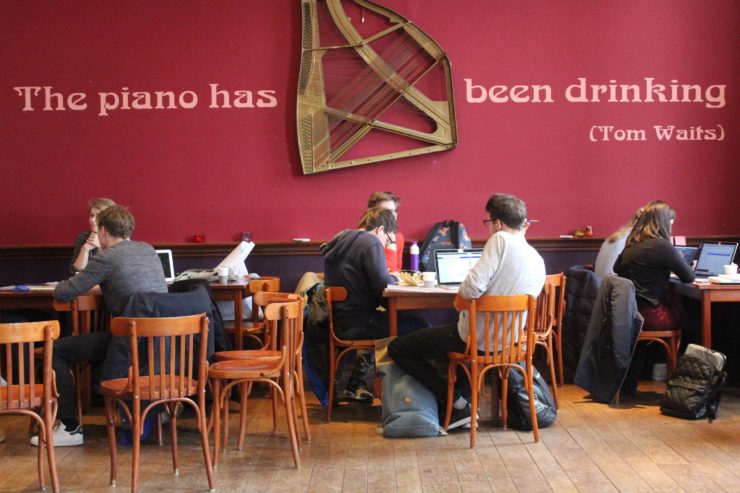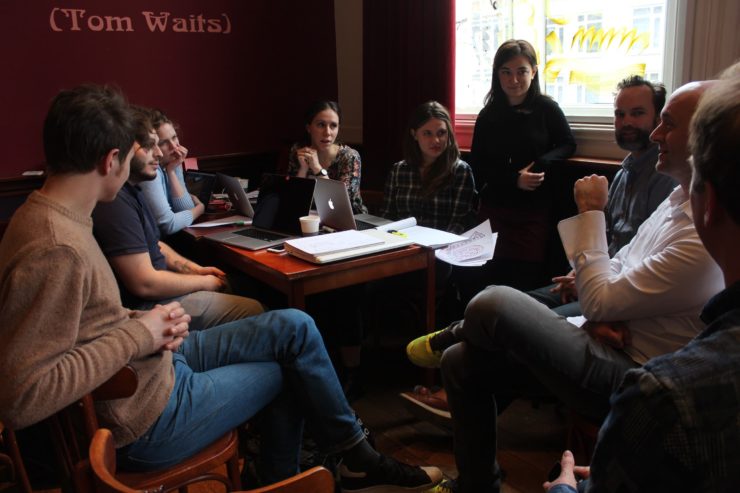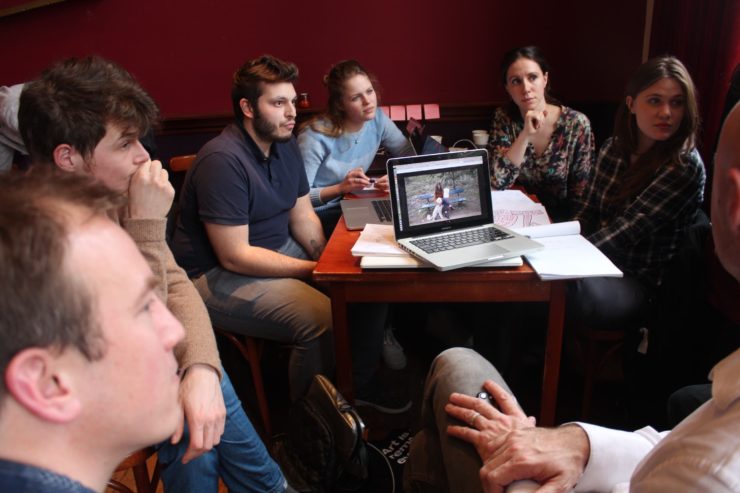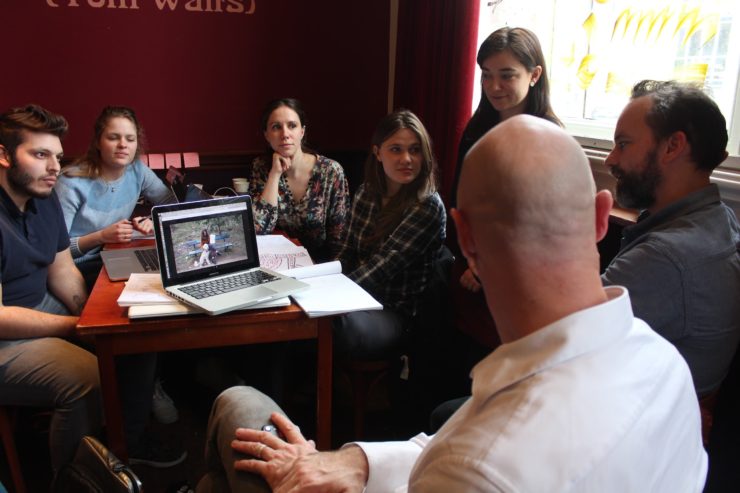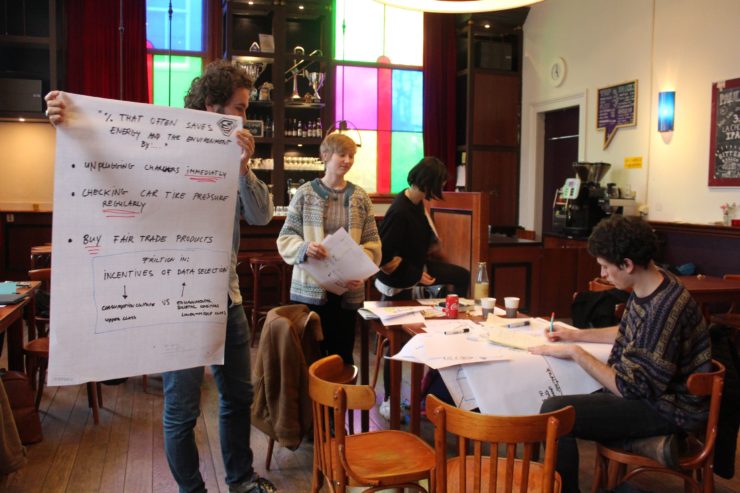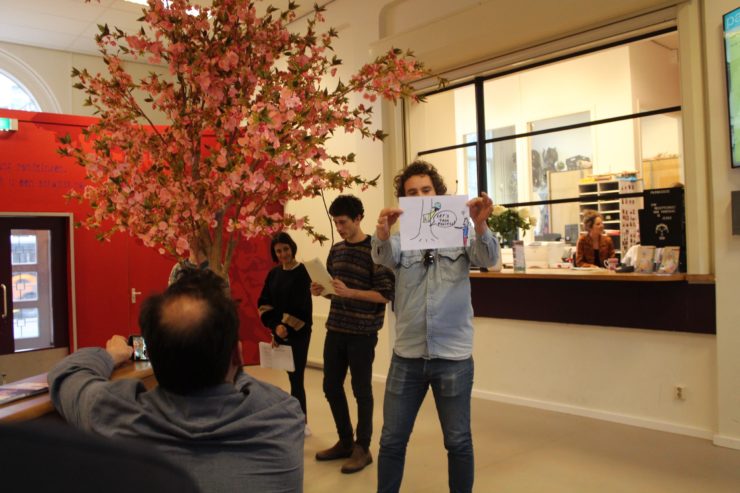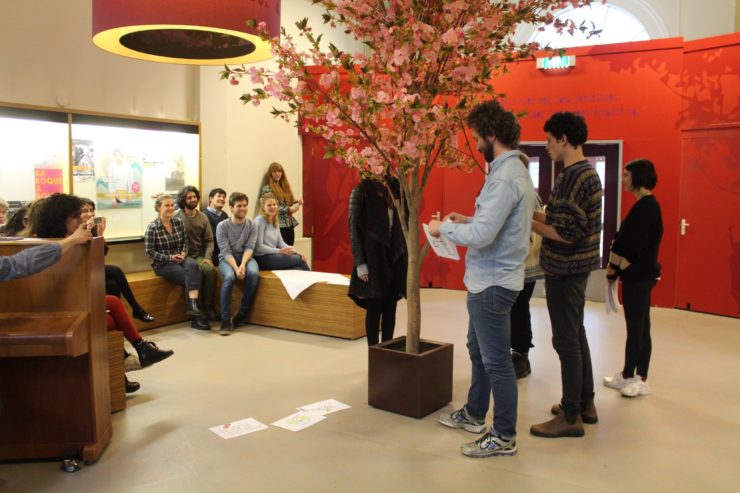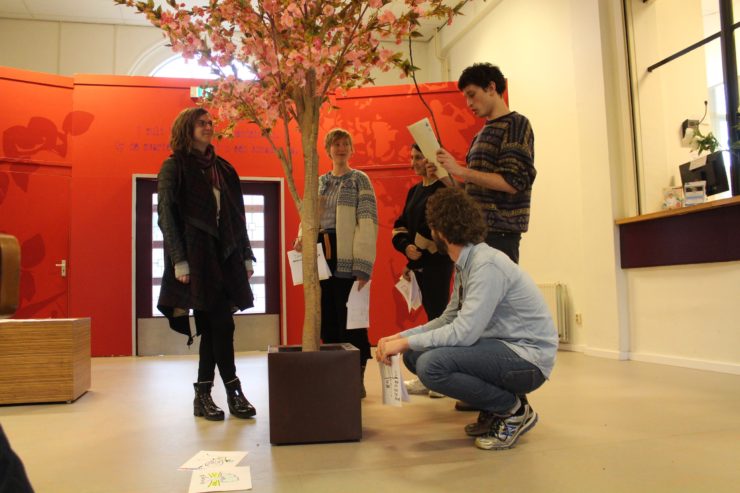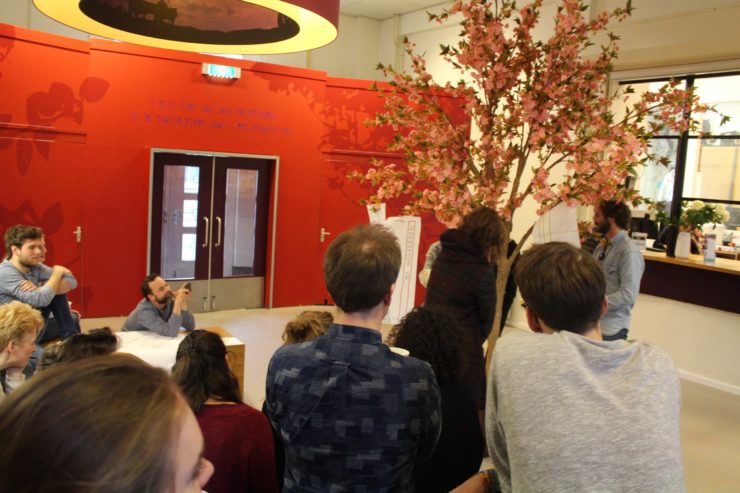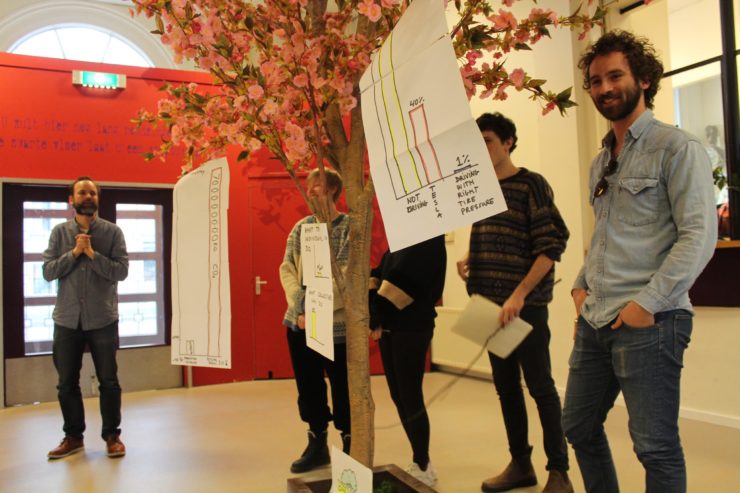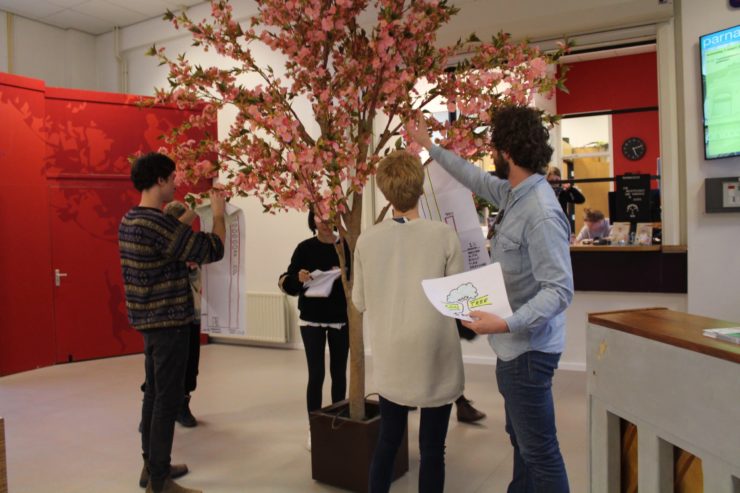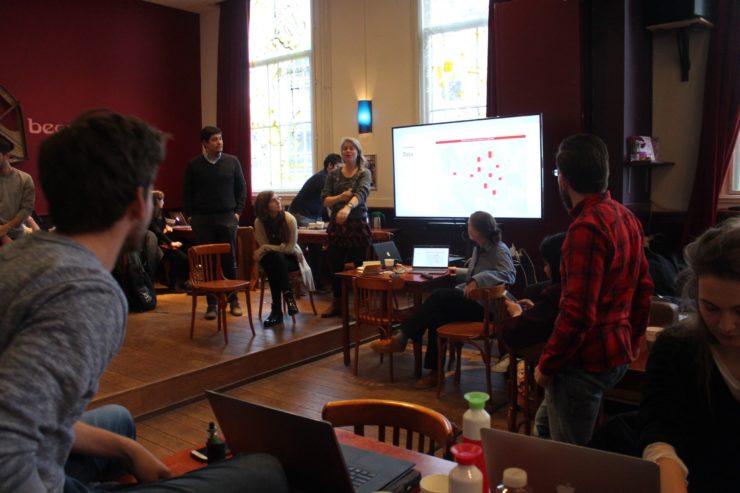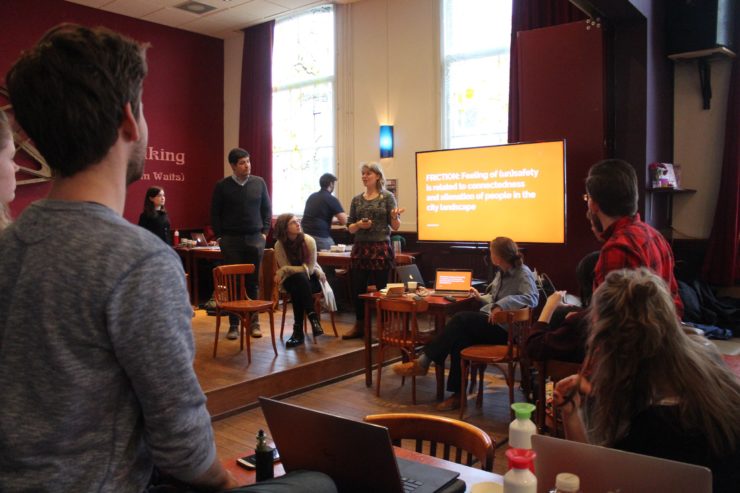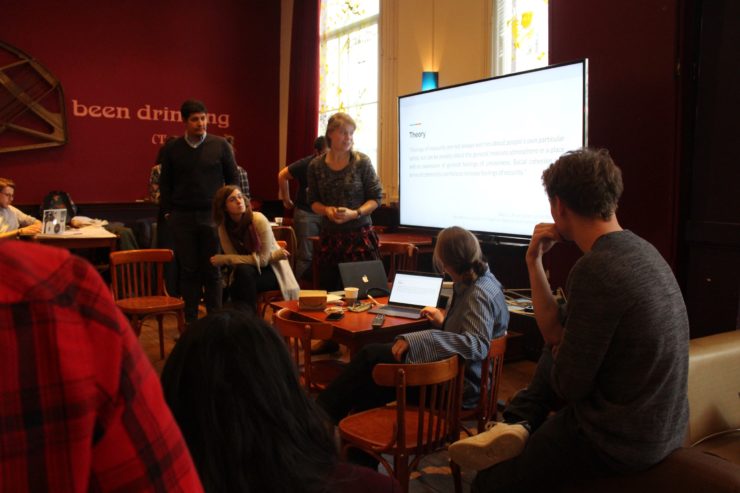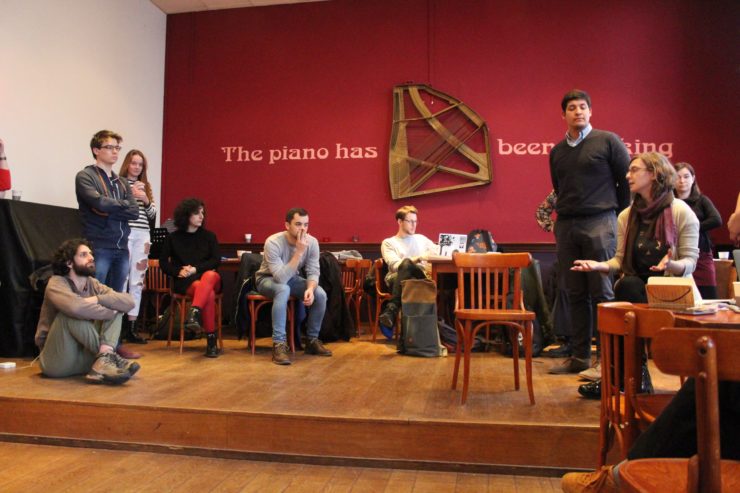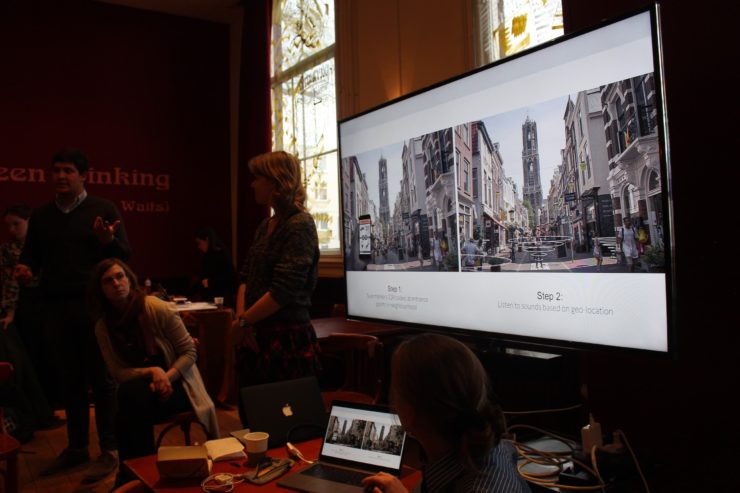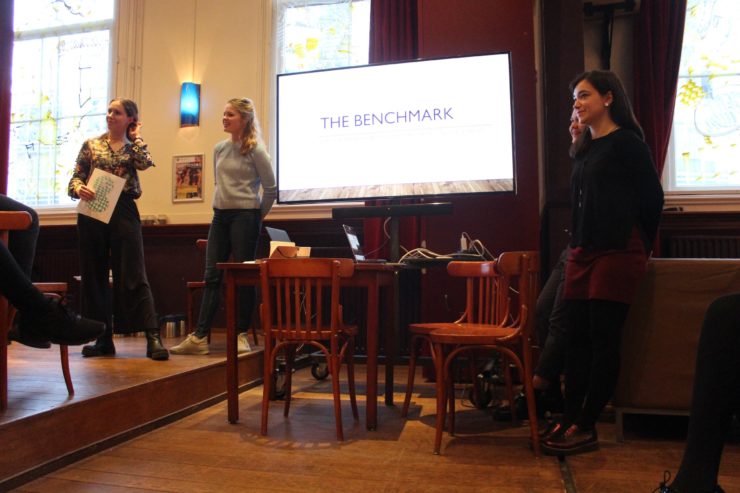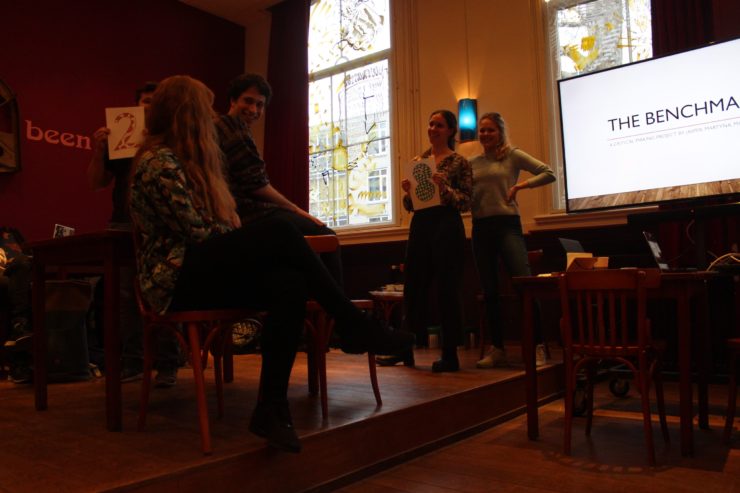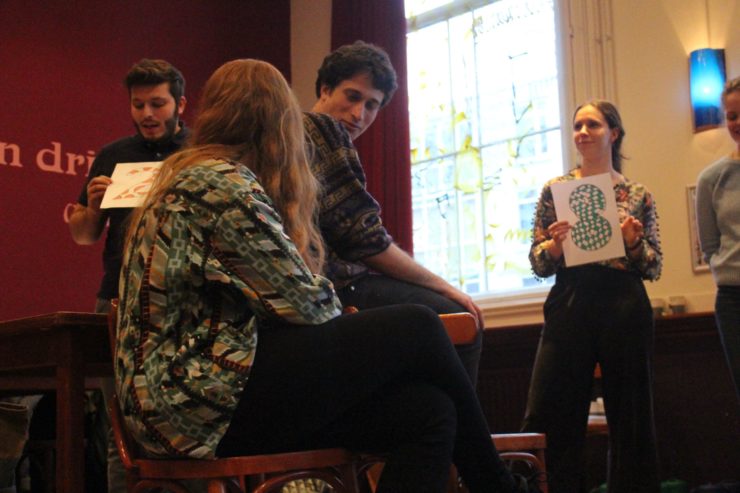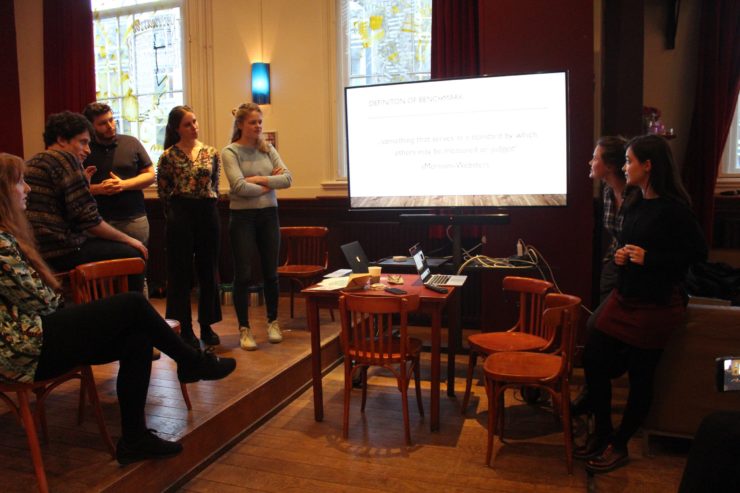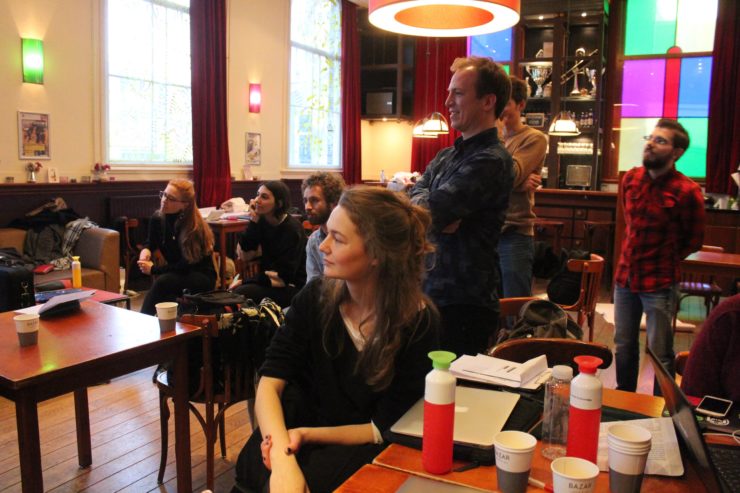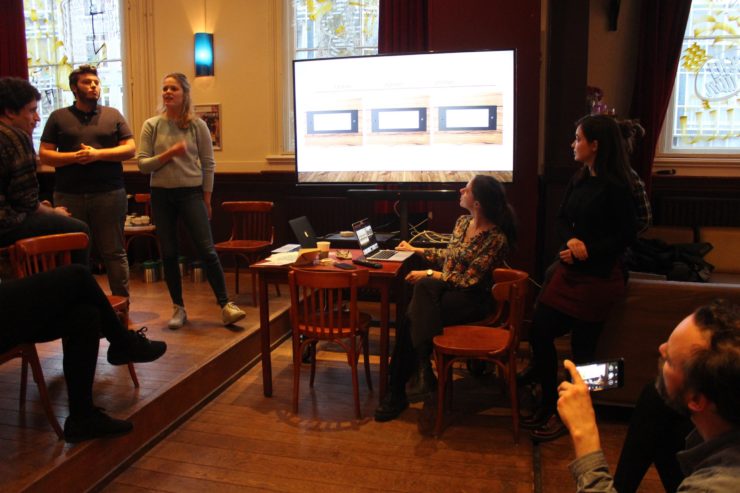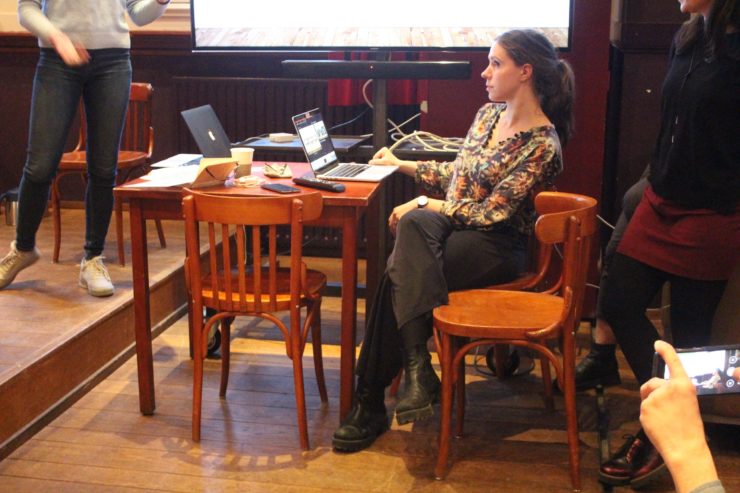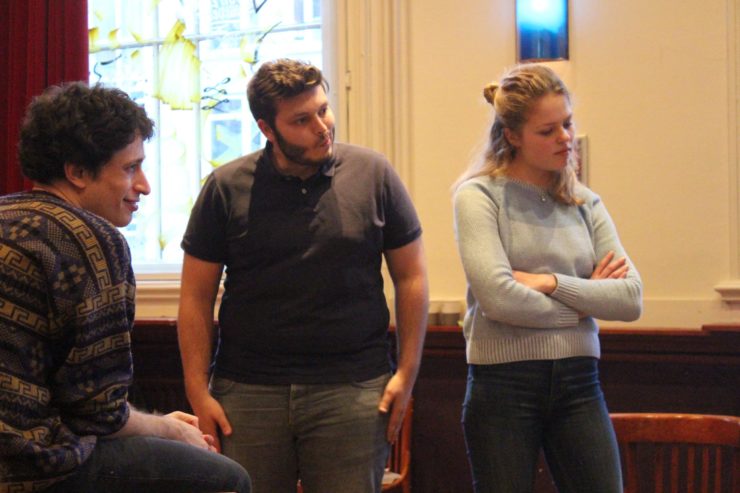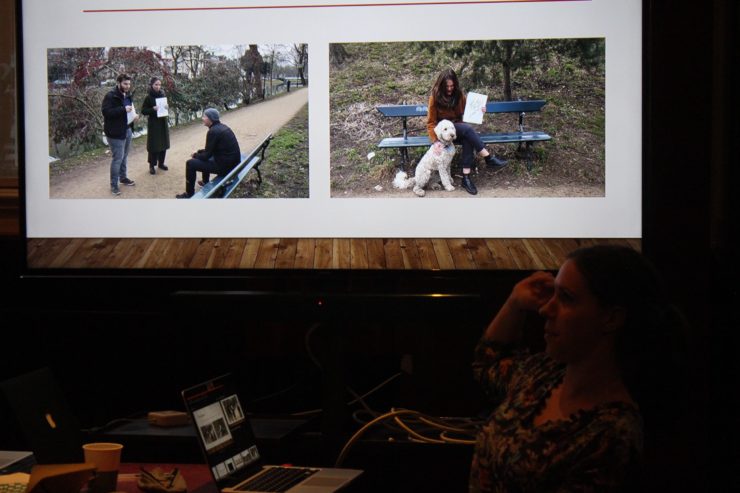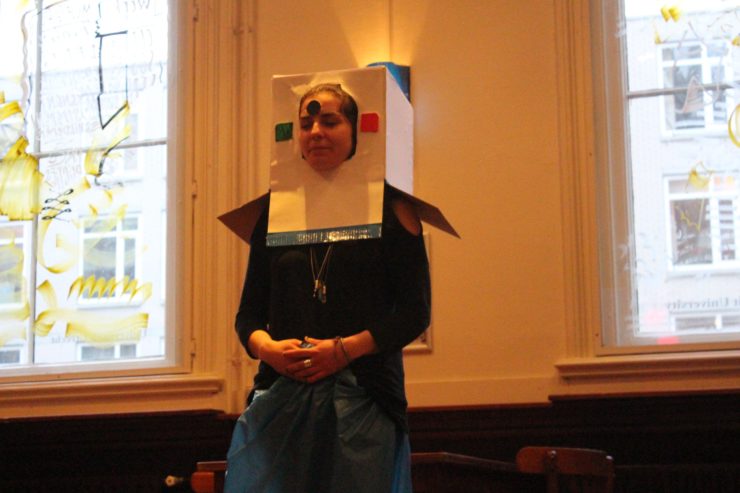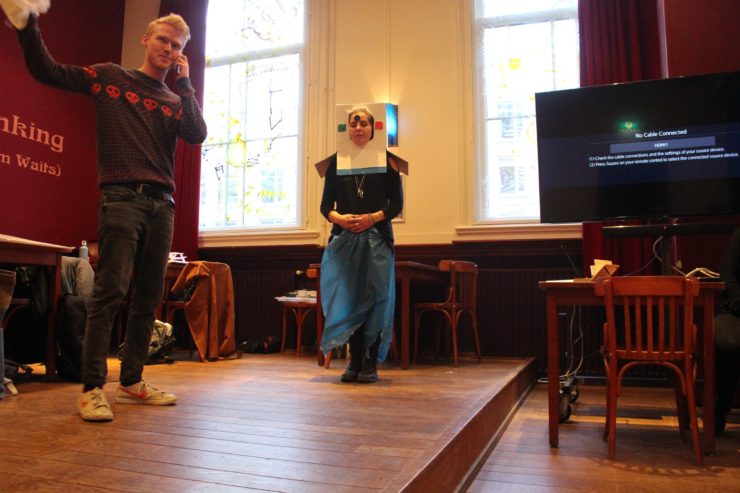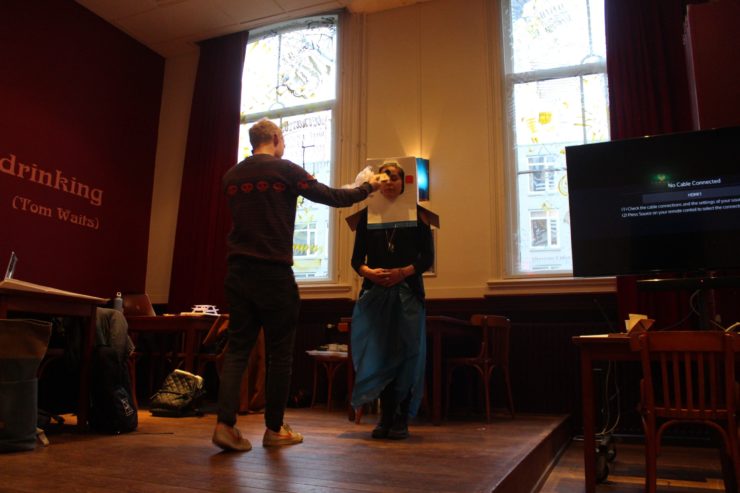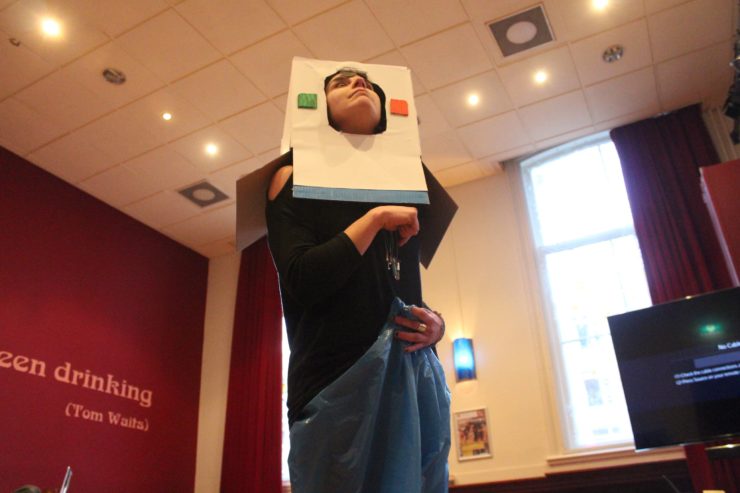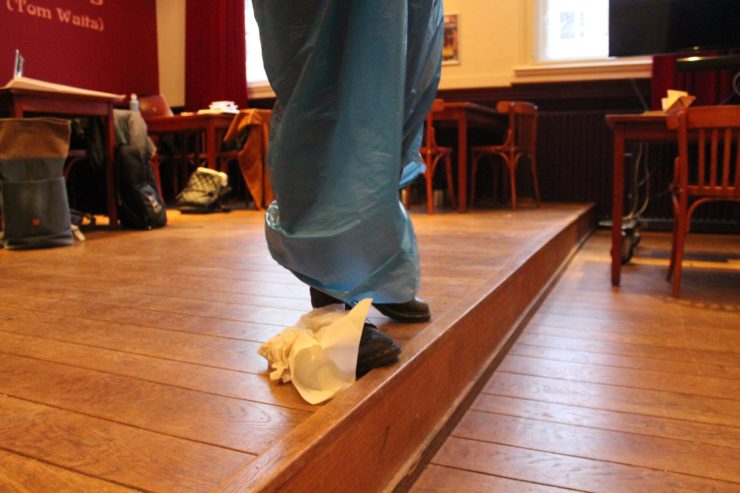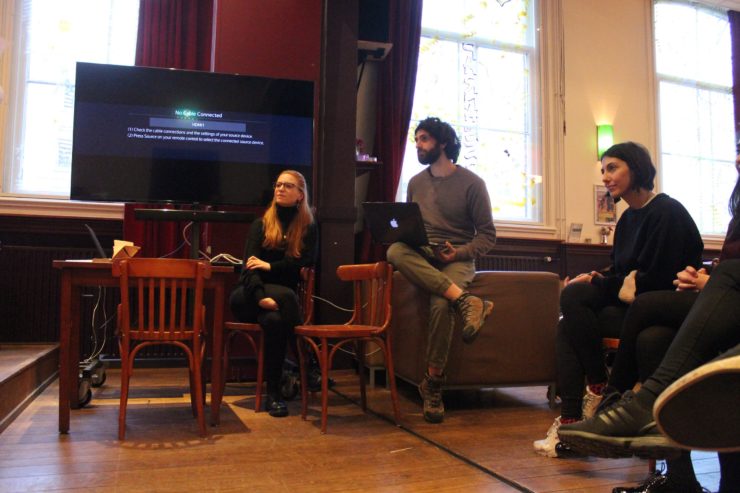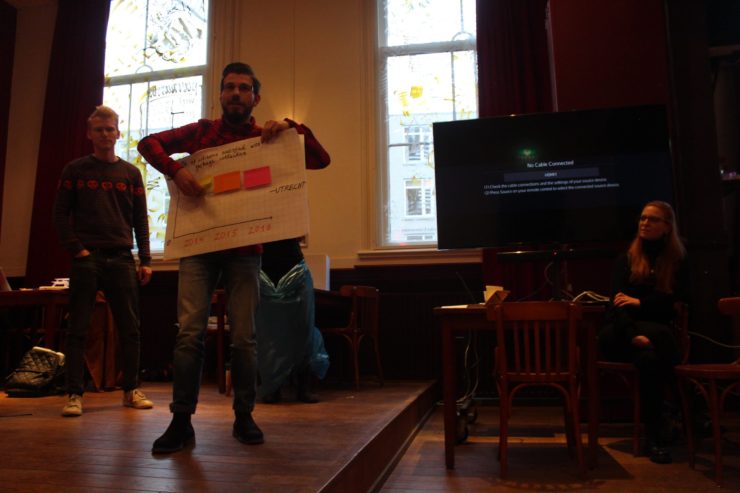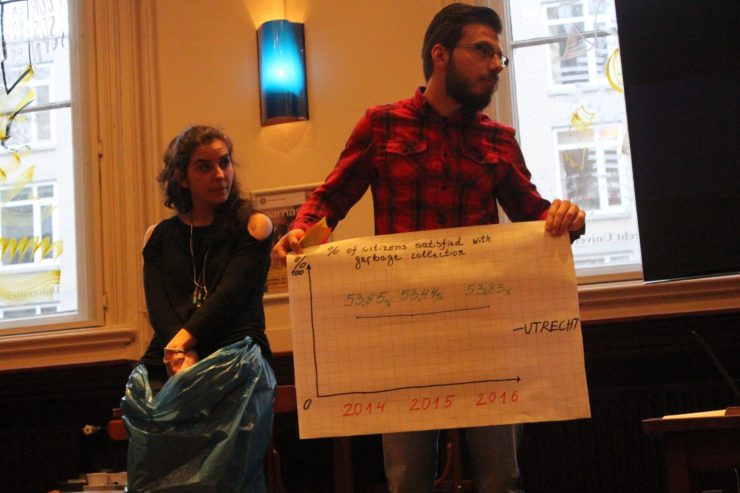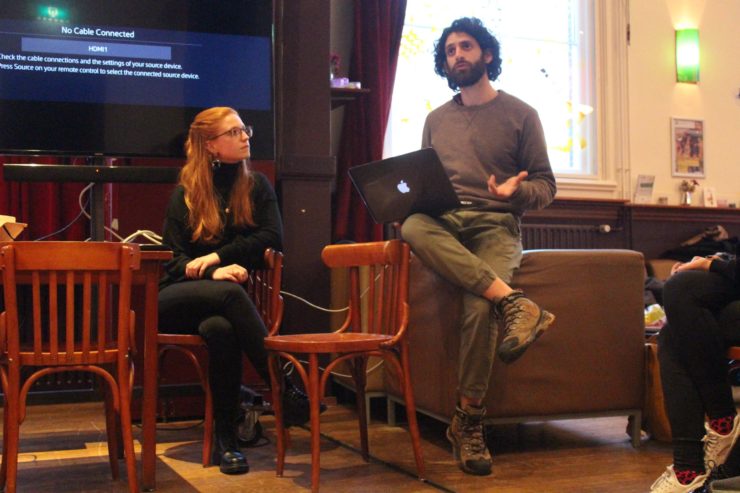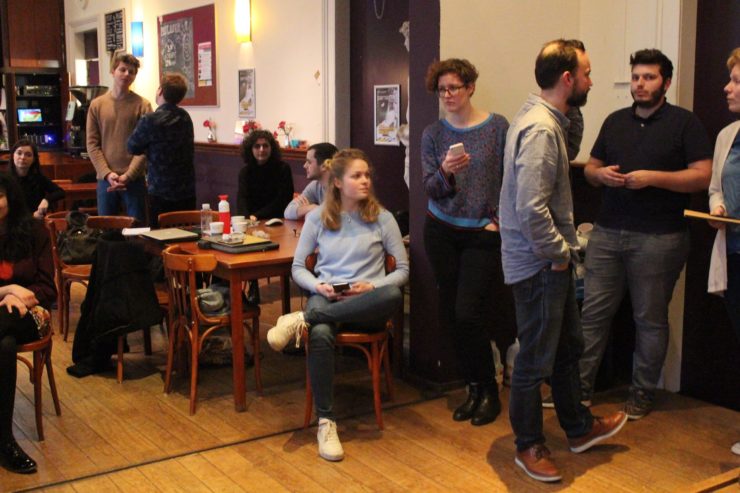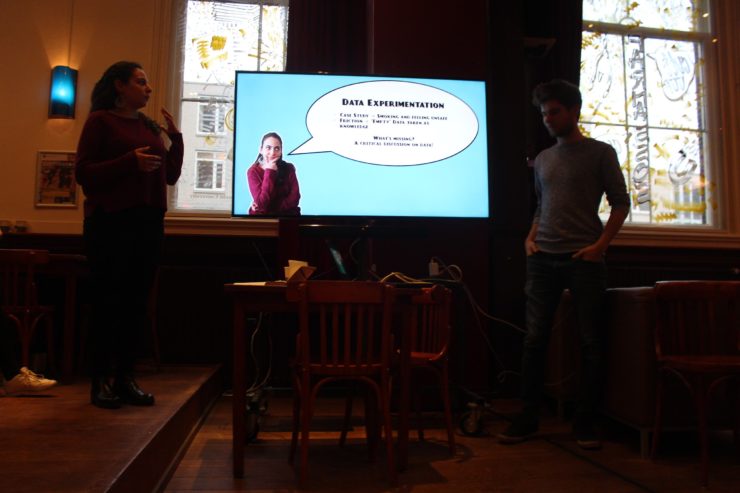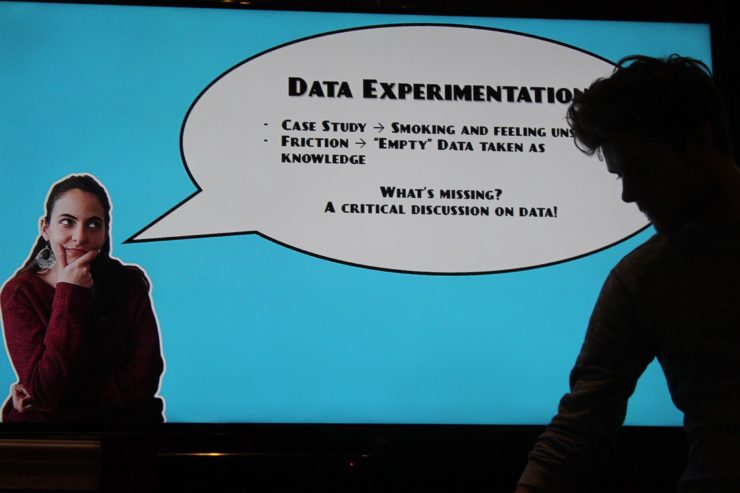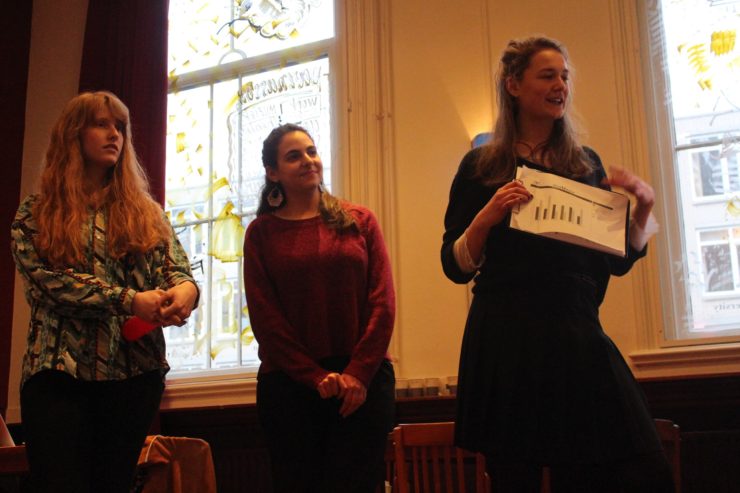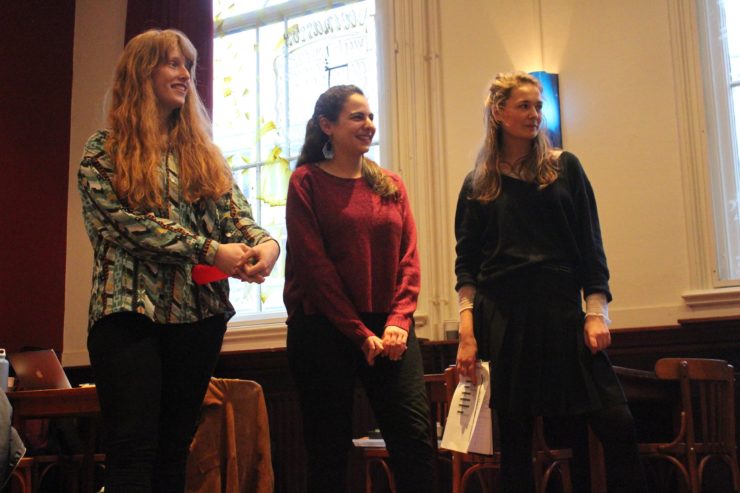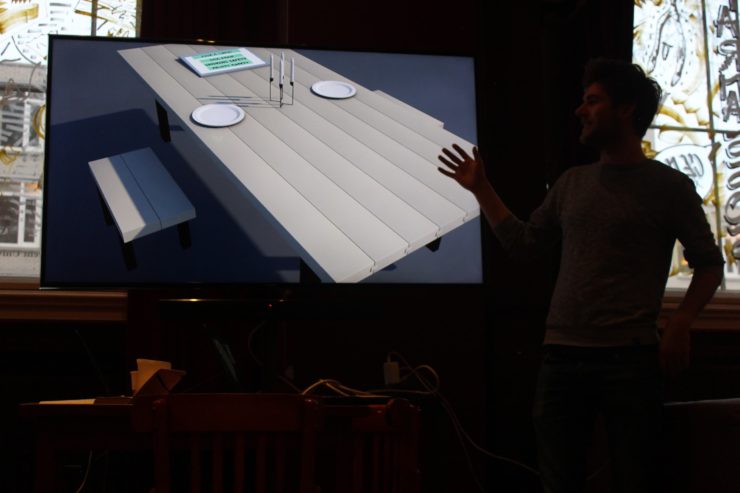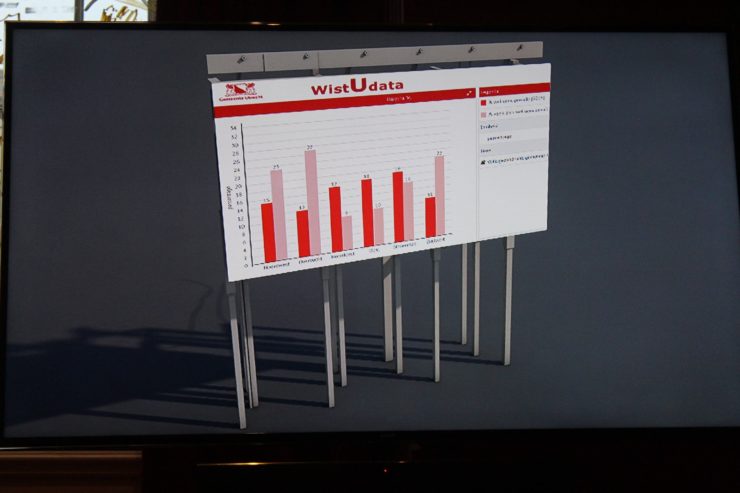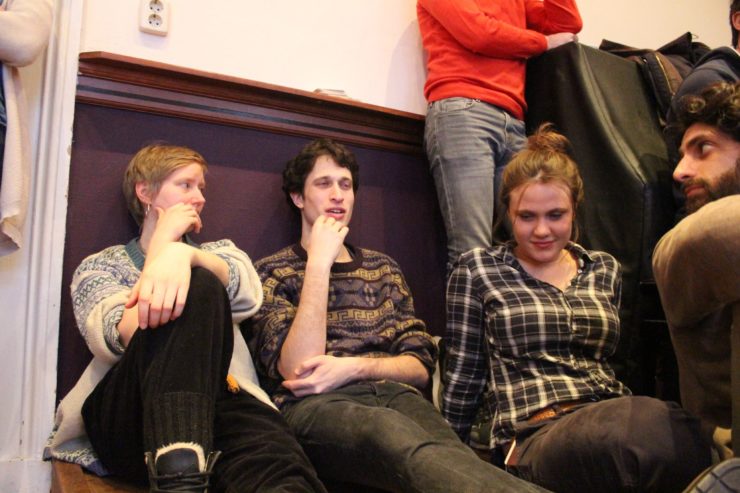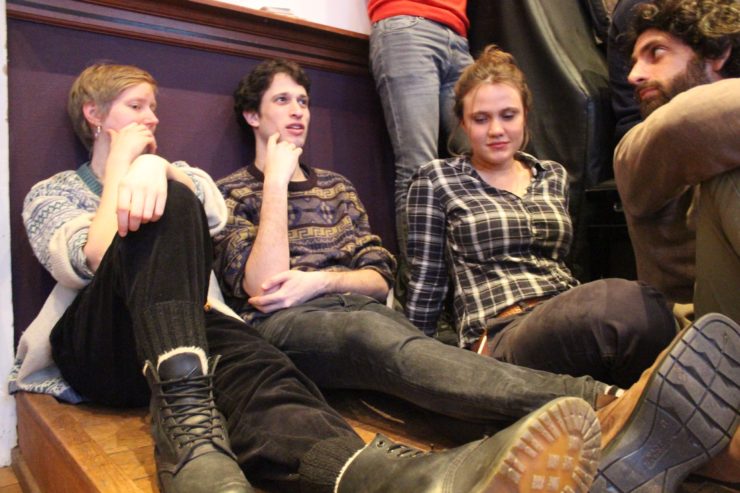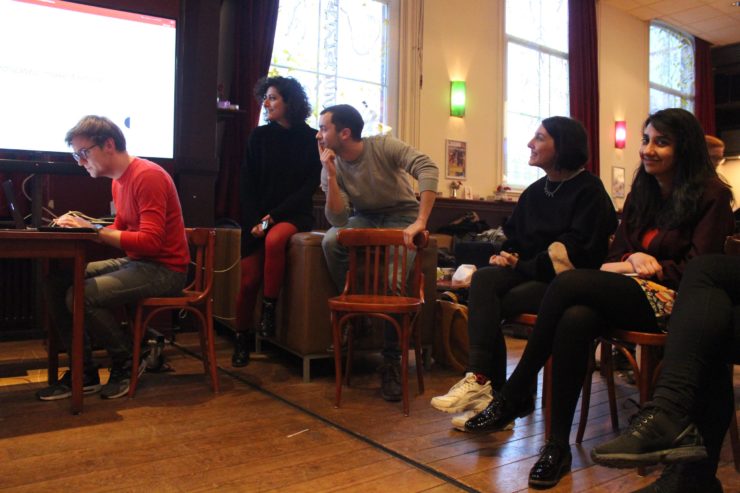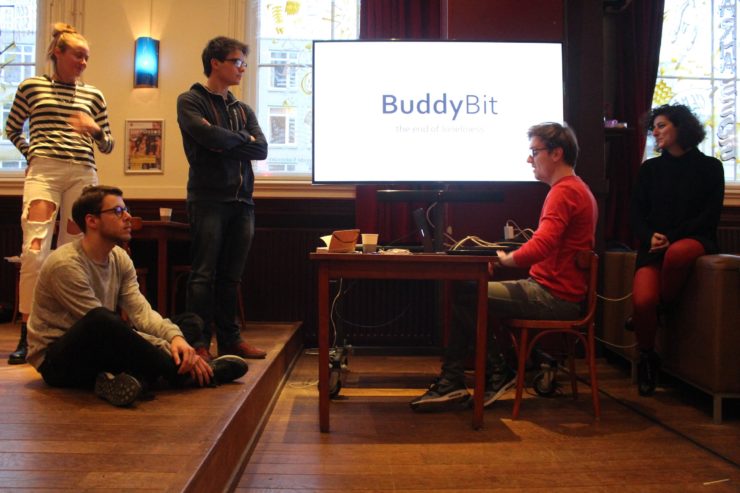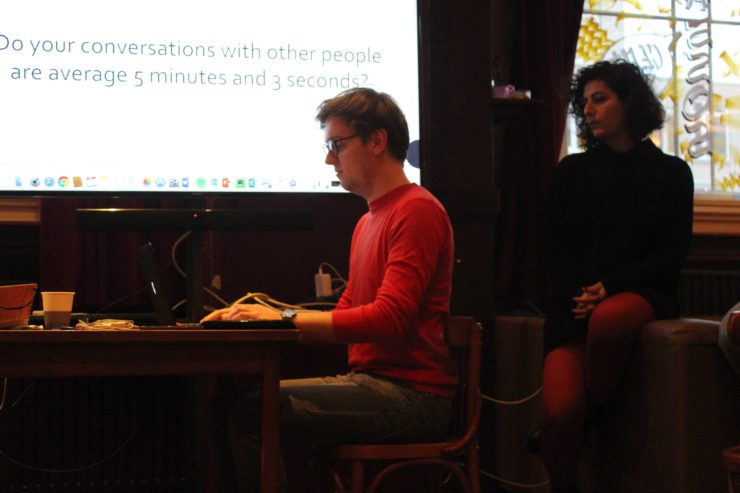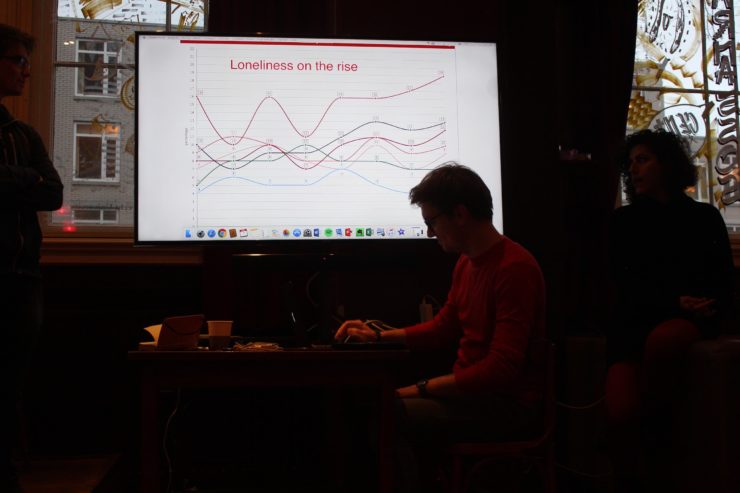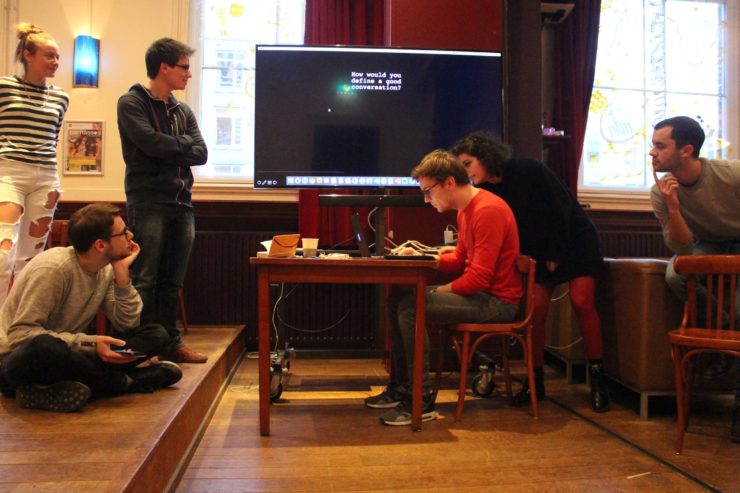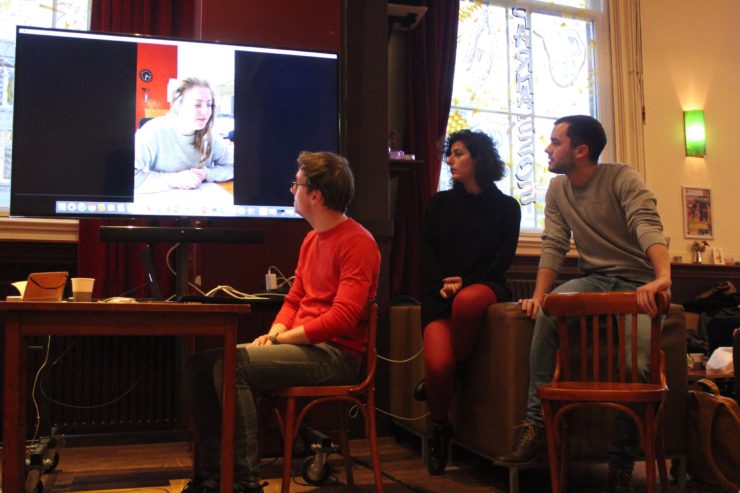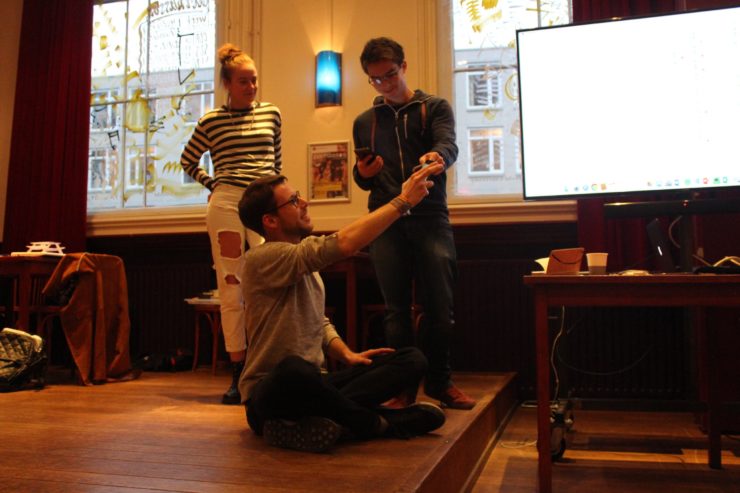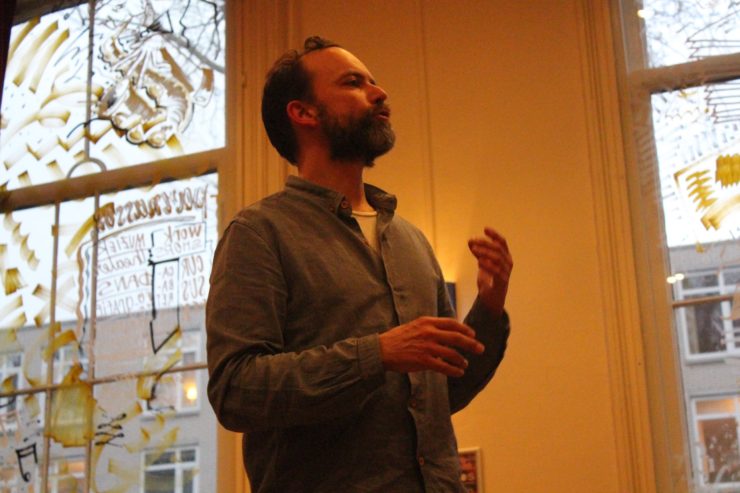[urban interfaces] Blogs
Report workshop “Critical Making of Frictional Urban Interfaces”
On March 6 and 7 2018, I co-organized the workshop “Critical Making of Frictional Urban Interfaces”, as part of the course Urban Interfaces that I teach together with Nanna Verhoeff.
The workshop was a collaboration between Utrecht University’s Media & Culture Studies department (research group [urban interfaces] + the research master program Media, Arts & Performance), and Creative Coding Utrecht, artists Ruben van de Ven (https://rubenvandeven.com) & Cristina Cochior (http://randomiser.info), in partnership with Het Nieuwe Instituut (https://hetnieuweinstituut.nl), and HKU (https://www.hku.nl).
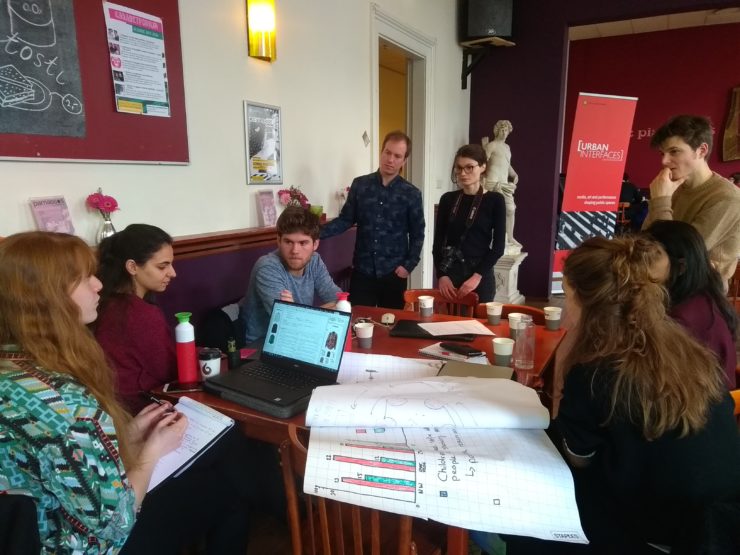
ABOUT THE WORKSHOP
During the workshop, mixed teams worked with urban data in order to explore the growing influence of data in our current urban societies, and raise questions about focussing on frictions. The pervasive presence of media technologies in, and datafication of urban space is connected with various urban frictions. Examples of these frictions include urban data giving rise to new processes of social sorting (think of crime maps), the further encroachment of commercial interests onto urban public space (e.g. customer loyalty cards, personalized marketing, tracking), and the militarization of urban space (e.g. surveillance, facial recognition, risk analysis). We tend to think of frictions as problematic obstacles to be overcome or minimized. However, frictions can also be productive. Artists, designers, and academics have used these very frictions as starting points to make publicly visible and raise questions about the role we want technologies to play in our cities. In this workshop we will use Friction as a central design principle. For this, we aim to bring togesther the worlds of creative making and critical reflection, through an approach called ‘critical making’. Critical making is a term coined by Matt Ratto “to describe the combination of critical thinking with hands- on-making: a kind pedagogical practice that uses material engagements with technologies to open and extend critical social reflection” (Hertz).
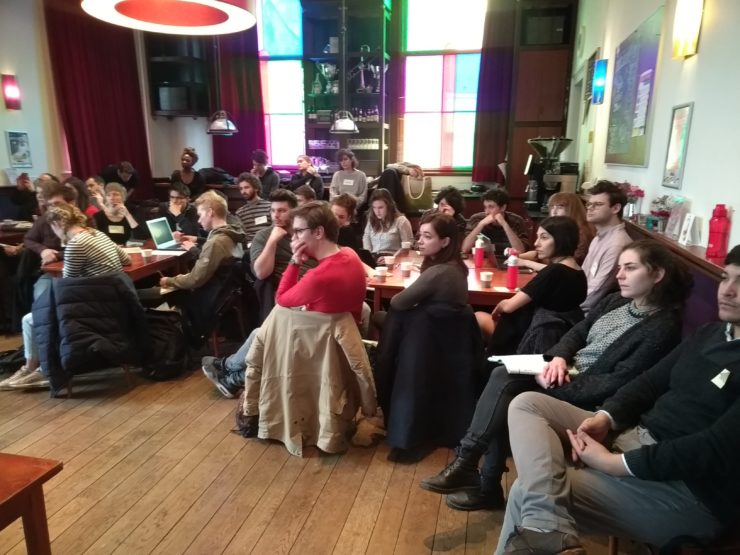
Assignment: During this workshop, teams will develop a dramatized data interface for a public location, that explores and elucidates urban frictions in technologically mediated cities.
PROGRAM
|
Day 1 – 6th March 2018 10:00 Welcome to “Workshop Critical Making of Frictional Urban Interfaces” by Nanna Verhoeff, Michiel de Lange, Sigrid Merx, Hira Sheikh |
Day 2 – 7th March 2018 |
STRUCTURE
The workshops was built around a series of 5 steps, which we described in a briefing sent in advance:
Step 1 – Imagining the story of an urban dataset
We understand datasets as frozen stories, snapshots that we can imaginatively reconstruct. Teams analyze a given dataset from https://utrecht.buurtmonitor.nl. Questions to consider: Who are the ‘characters’, the people who collected and selected these data? What aims did they have? What hangups, issues, emotions did they have producing this data? What frictions can you identify in the making of the data? What do the data say, what do they not speak about, what are the limitations and biases, what could be the embedded politics?
Output: This step is meant to get the creative juices flowing, and to begin the critical process. The outcome is a list of at least 3 initial intuitions about possible dramatizations of data, beyond its apparent intention. Sketch this on a poster for presentation.
Step 2 – Urban friction as plotting device
We consider friction as a way to bring drama into the reconstruction of the dataset. Teams formulate at least five possible frictions arising from step 1. Next, teams identify one specific friction that you will work with. The aim is to change the way we think of data as saying something about the world.
Output: a defined urban friction to work with, that acts as a plotting mechanism. Sketch this on a poster for presentation.
Step 3 – Situating the urban friction
In his step you will develop the narrative setting of the friction. Each team will determine a location and time that situates, and offers the context of this friction. Where and when does the story take place?
Output: storyboard for a dramatized narrative in a particular urban setting.
Step 4 – Urban interface
From the dramatization of data developed in step 1-3, we now move to the design of a critical interface. How can your interface mediate the frictions imagined in the dataset, and how can people engage with this? Briefly review the existing visual aesthetics of datavisualization on urban dashboards. Think not only about what interfaces represent but also about how they produce, ‘perform’ a specific type of narrative. How can you subvert this logics and aesthetics? How can you make friction a guiding design principle for datavis and dashboards? How can your interface produce certain meanings and affects in people?
Output: a mockup or sketch of a tangible, material interface.
Step 5 – Urban Intervention
In the final step you locate this interface in the urban context. Re-connect the dramatized data (steps 1-3) and the interface (step 4) to the city: Where and when will you place your story as a localized urban intervention? How can you engage an audience with your story? How is this a way of making your data narrative truly “public”?
Output: present your design in the form of your choosing – including a statement about the critical aim of this intervention.
PROCESS
Day 1 kicked off by a series of inspirational talks by the workshop organizers, Klaas Kuitenbrouwer (Het Nieuwe Instituut – who is involved in a multi-year Critical Making project), Fabian van Sluijs (Creative Coding Utrecht), Daan Krijnen (Ngage Media), Ruben van de Ven (Affective Interfaces), Cristina Cochior (Data Dramatization).
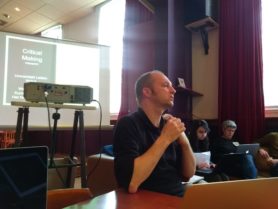

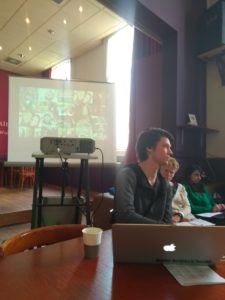
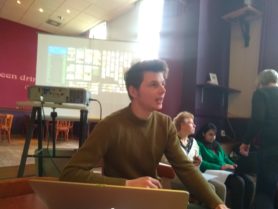
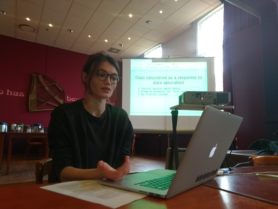
After that, teams were formed and participants started to work on the assignment.
Day one was devoted to fictionalize and dramatize data. Through this approach we aimed to better understand how data are produced by people and organizations with certain aims in mind, but also with certain subjective moods, quirks and so on. At the end of day 1 teams briefly presented their work in progress. It appeared that it was very hard to go beyond the initial reflex to parody and mock the data, by ridiculing the categorizations, and spurious correlations suggested by these data.
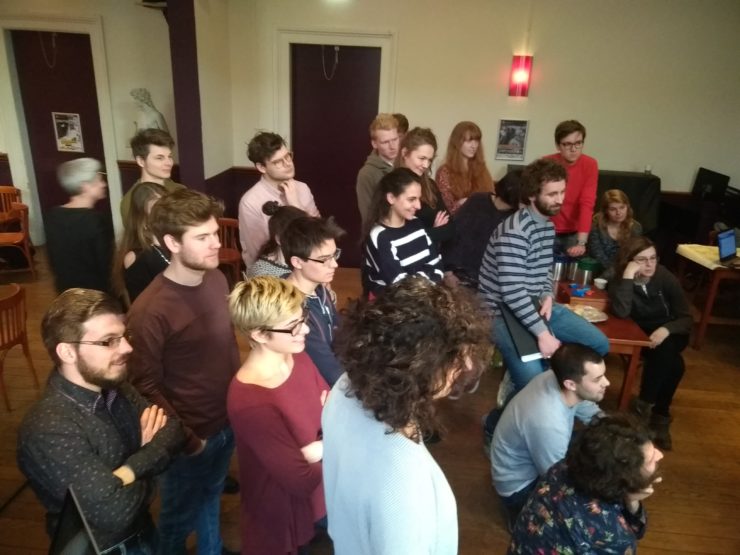
On day two we begun by pressing the participations a little to step up their game, and focus on one or more of the following issues: what urban friction are you addressing, can you dig deeper into the data and come up with interesting dramatizations, and can you situate your intervention in such a way that it actually allows for engagement and people’s voices to be heard, possibly by testing out your prototype outside on the city streets? Teams worked very hard that day and came up with a great number of concepts, which they presented at the end of the day.
SHORT REFLECTION
As a very brief reflection, the approach itself seems a great way of combining critical thinking and creative making processes. Instead of seeing these as mutually exclusive or belonging to different disciplines (humanities=critical; arts=creative) but actually reinforcing one another. The making part still remained relatively underdeveloped, which is not surprising considering this was a 2-day workshop, and that working with data often involved a steep learning curve for the uninitiated. Also, the dramatizations and stories could acquire more depth and texture through more sustained involvement. The organizers see this as the first step in a hopefully longer-running collaboration.
DOCUMENTS
Briefing of Workshop Critical Making of Frictional Urban Interfaces >>
Call for Workshop Critical Making of Frictional Urban Interfaces >>
This post also appears at the Co.Laborations website >>
PHOTOS
Below a series of photos of the workshop, courtesy of Cristina Cochior.

